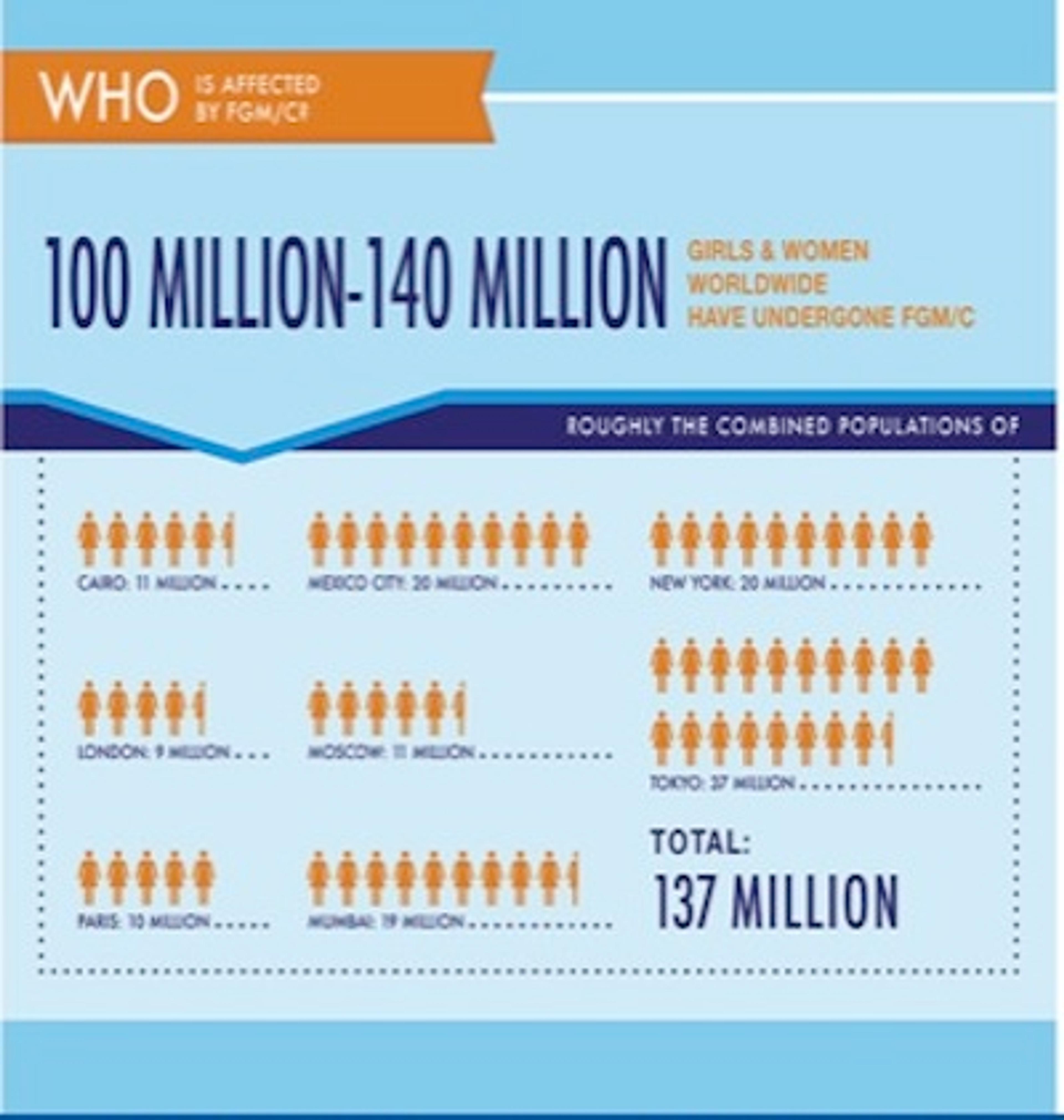Female Genital Mutilation: what is the problem and what can be done?
This post is a summary of a research report on female genital mutilation written during the September Internship. We have sought to understand the range of motivations and external forces behind communities practicing female genital mutilation (FGM) (also known as female genital cutting (FGC)), as well as the effects on the recipients of the mutilation and on the societies in which this practice is prevalent.
We used this understanding to evaluate current interventions which attempt to curb FGM and to see why some initiatives have failed where others have succeeded. We present what seems to be the most effective intervention principles. This may become the basis for recommending charities which have presented the best results.
The problem
Our research shows that:

- More than 125 million women and girls have undergone FGM in the 29 countries in which the practice is concentrated – mainly in Africa and the Middle East, with the highest prevalence in Somalia, Guinea, Djibouti, Egypt, Eritrea, Mali, Sierra Leone and Sudan (all with over 88% of women and girls subjected to FGM).
- The most commonly cited reasons for practising FGM are wanting to uphold traditional/religious practice and fearing the social repercussions of not having undergone the procedure.
- Despite there being no medical or hygienic benefits to undergoing FGM, widespread misinformation has perpetuated myths around FGM aiding fertility, enhancing male sexual pleasure and being more hygienic.
- Individual health effects of FGM depend on the context, in particular on the following factors:
- where the practice takes place,
- whether the practitioner is medically trained,
- whether unsterilized instruments are used,
- whether surgical thread is used rather than agave or acacia thorns,
- whether antibiotics are available,
- how small a passage is left,
- whether the procedure is performed more than once.
- Some of the most common effects of FGM on the victims are psychological damage, recurrent infections, chronic pain, cysts, infertility, complications during childbirth and fatal bleeding.
- Women and girls, who are in most cases socially dependent upon men, are in no viable position to assert their choice regarding undergoing FGM, as they are either coerced or forced into the procedure or are operated on as children.
Effective interventions?

In order to most effectively combat the practice of FGM, we need not only legislation but also a change in social norms so that the new laws are implemented widely and properly. The WHO emphasises the importance of outreach and education in order to involve key stakeholders within each community, without which the effectiveness of a given educative intervention would be significantly lower.
Although there are numerous charities working towards the abandonment of FGM, reliable quantifiable analysis of their comparative effectiveness has thus far proved elusive. At present there are only relatively vague recommendations for general tactics to deal with FGM. As a report by the WHO explains:
There is a lack of high-quality studies on strategies for reducing female genital mutilation/cutting (FGM/C). Available data suggest that community leadership is key to decreasing the prevalence of FGM/C on a large scale. programs that ignore key stakeholders in the community experience resistance to change. FGM/C programs [...] must be moulded to the specific needs of each community.[1]

An example of an intervention that appears promising is a recent initiative by the UK's Department for International Development (DFID) . In 2013, the DFID started a program called <ahref="http: devtracker.dfid.gov.uk="" projects="" gb-1-203024="" "="">‘Toward Ending Female Genital Mutilation/Cutting in Africa and Beyond’ which will run until the end of 2018. What is most promising about the intervention is that it highlights opportunities for developing rigorous methodologies so that comparisons can be made across sites, providing high quality material for use in future programs.</ahref="http:>
In conclusion, FGM is a pervasive practice which requires a co-ordinated and evidence-based approach to ensure that funds and resources are applied in the most effective manner. Interventions must be aware of the sociocultural dynamics which underpin the complex motivations and effects of FGM. With work ranging from international collaboration to community level engagement, and interventions founded in solid research, there is certainly reason to believe that FGM is a soluble problem.